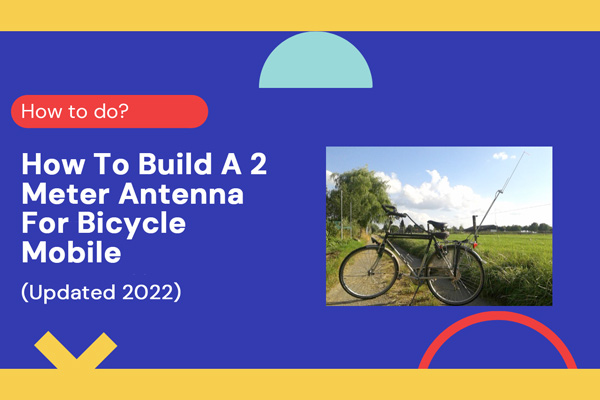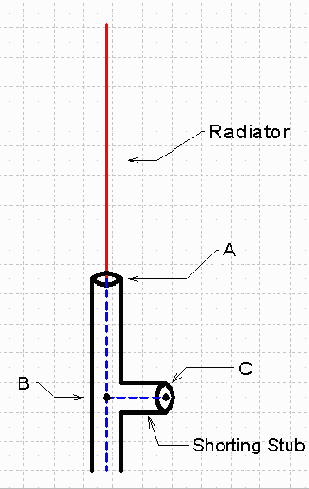
Probably the biggest problem with taking your HT biking is thinking of a suitable antenna on your bicycle. This is because the bike doesn't give much of a ground plane. I located a post in the ARRL's Tips as well as Kinks composed by Charlie Lofgren, W6JJZ, titled "The Bike 'n Walk Unique". Below are the plans for the antenna he explained in the post.

This antenna is a 1/2 wave upright dipole constructed of RG-58/ U coax. The appeal of this design is that it is cheap, easy, as well as very easy to make with easily available materials. The radiator needs to be 39 inches wish for 2 meter operation. What I use for the radiator, is the center conductor of the RG-58/ U coax. I start with a 12 foot piece of coax. After that there is enough left so it can be run up to the radio. I keep my radio in my handlebar bag.
Initial measure for how long the radiator is to be, after that trim off the external sheath, as well as guard. Next, on the various other end of the coax, I removed an item of coax that is mosting likely to be the shorting stub. The correct size depends on the speed factor of the coax used (see table below). In all situations, I constantly make the lengths to the long side. This way the antenna can be trimmed in to the desired frequency with a SWR bridge.
Brief the facility conductor to the guard of the coax at point C
The measurements for the matching section hinge on the velocity factor of the coax utilized.

To link the shorting stub to the feedline, thoroughly remove a small area of insulation from the center conductor (no greater than 1/4 of an inch). Solder and also tape the inner conductor, after that join and solder the shields. To guarantee appropriate protecting, split a spare piece of pigtail lengthwise in addition to the shield connection, and meticulously solder the shield together. Finally, hang up your antenna in an open space, as well as tune it in with a SWR meter. I have found that adjusting the length of the shorting stub has one of the most influence in adjusting for minumim SWR.
I bought a fiberglass bicycle-flag post from the local bicycle shop, and also taped the antenna to it. You could also utilize heat-shrink tubes over the fiberglass pole as well as cable, if offered. I also such as to affix a 2 foot 1/4 inch dowel pole to the bottom part of the antenna. This assists stabilize it while you are riding, as well as the antenna whips back and forth less. One more point that helps is to make the antenna more tough is to slip on a brief item of garden tube and also protect it to ensure that where ever before your bike frame strikes the antenna it will certainly strike the garden hose rather. Ultimately, I use a "bungie cord" around my back carrier rack and also the antenna for added assistance.
This antenna can be built in concerning an hour. Wish to "catch-ya" bike mobile some day!